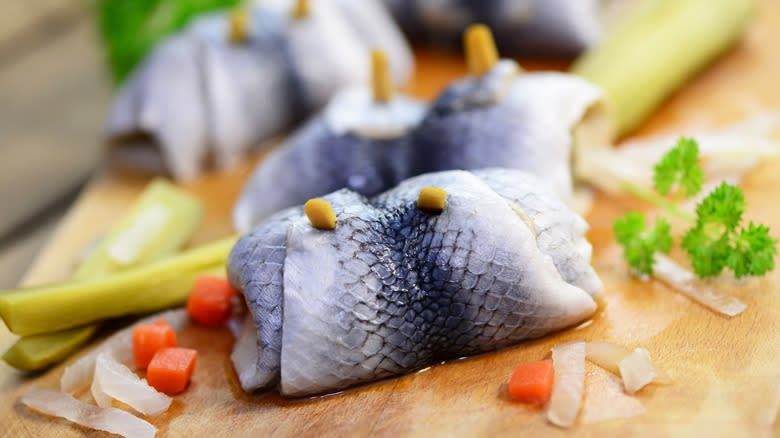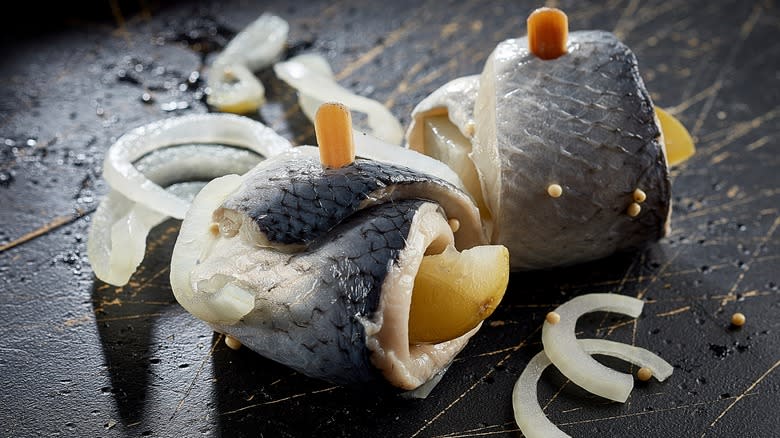German Rollmops: The Pickled Herring Served With Traditional Labskaus

While the sushi that most of us know and love traditionally hails from Japan, you'll find culturally exclusive twists in almost every corner of the globe — which is everywhere from Russia, which adores smothering mayonnaise and cream cheese on chicken sushi rolls, to Thailand, where KFC chains serve up fried maki rolls. When it comes to Germany, however, the country offers us a variation of sushi that isn't a fun spin on the typical Japanese dish, but a medieval cuisine idiosyncratic to Western Europe.
Rollmops are pickled herring fillets, which are rolled into a cylinder shape that envelops savory fillings like onions or pickles. They are typically stuffed, pierced with a cocktail skewer, and placed ready-made in jars that keep them preserved in a brine of water, white vinegar, sugar, salt, and spices. They can be purchased in these jars, or you can prepare them yourself and jar them for up to 10 days. When making rollmops, you'll need to set aside at least three days to pickle the fish.
Often, you'll see rollmops served with Labskaus, which is a traditional mashed German dish made from potatoes, onions, beetroot, and corned beef. The result is a vividly pink (from the beetroot) mash that resembles something between ground meat and pink mashed potatoes — hey, don't knock it 'till you try it. In fact, rollmops are such a common side for Labskaus that many sources include it in the Labskaus recipe.
Read more: 15 Different Ways To Cook Fish
Herring: A Delicacy Of Europe

Herring has played an integral part in European food for thousands of years, as it was readily available to both the wealthy and the poor because of its easy accessibility; however, during the fish's off-season, it became less plentiful, so preservation methods were developed in order to make up for lost numbers. Pickling became a very common way of storing and transporting herring at a time before people had easy access to freezing techniques.
By the early 19th century Biedermeier era, rollmops grew as a popular German dish and were considered a claim-to-fame of Berlin. After new advancements in the railways made an appearance, the rollmops' fame skyrocketed even more, as they could easily be transported from the sea via wooden barrels after being pickled. The fish were often displayed in pubs in large glass cases called "hungerturms," or hunger towers, which were a focal point of sales back in the old days. In this day and age, many Germans consider rollmops and Labskaus the ideal hangover food due to the meal's high protein and electrolyte levels.
Read the original article on Tasting Table.


